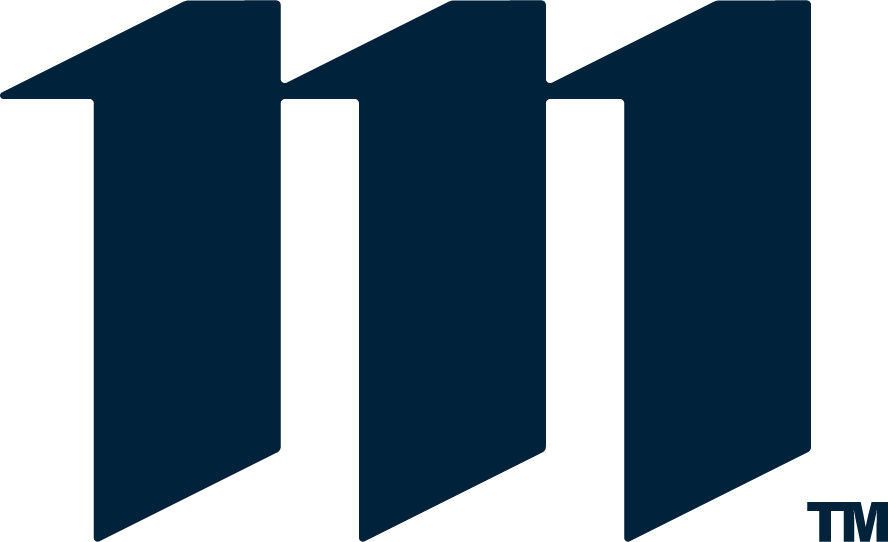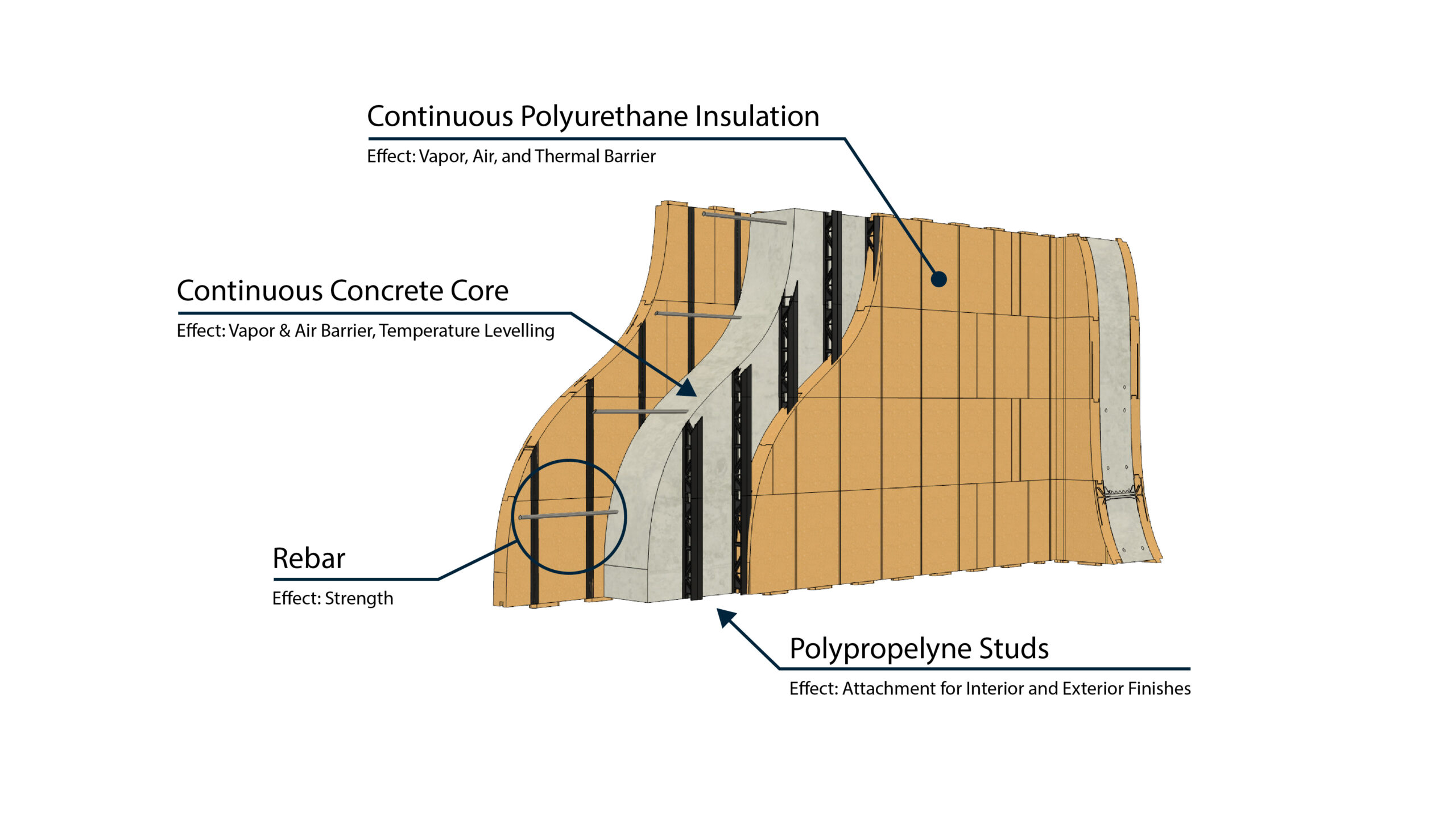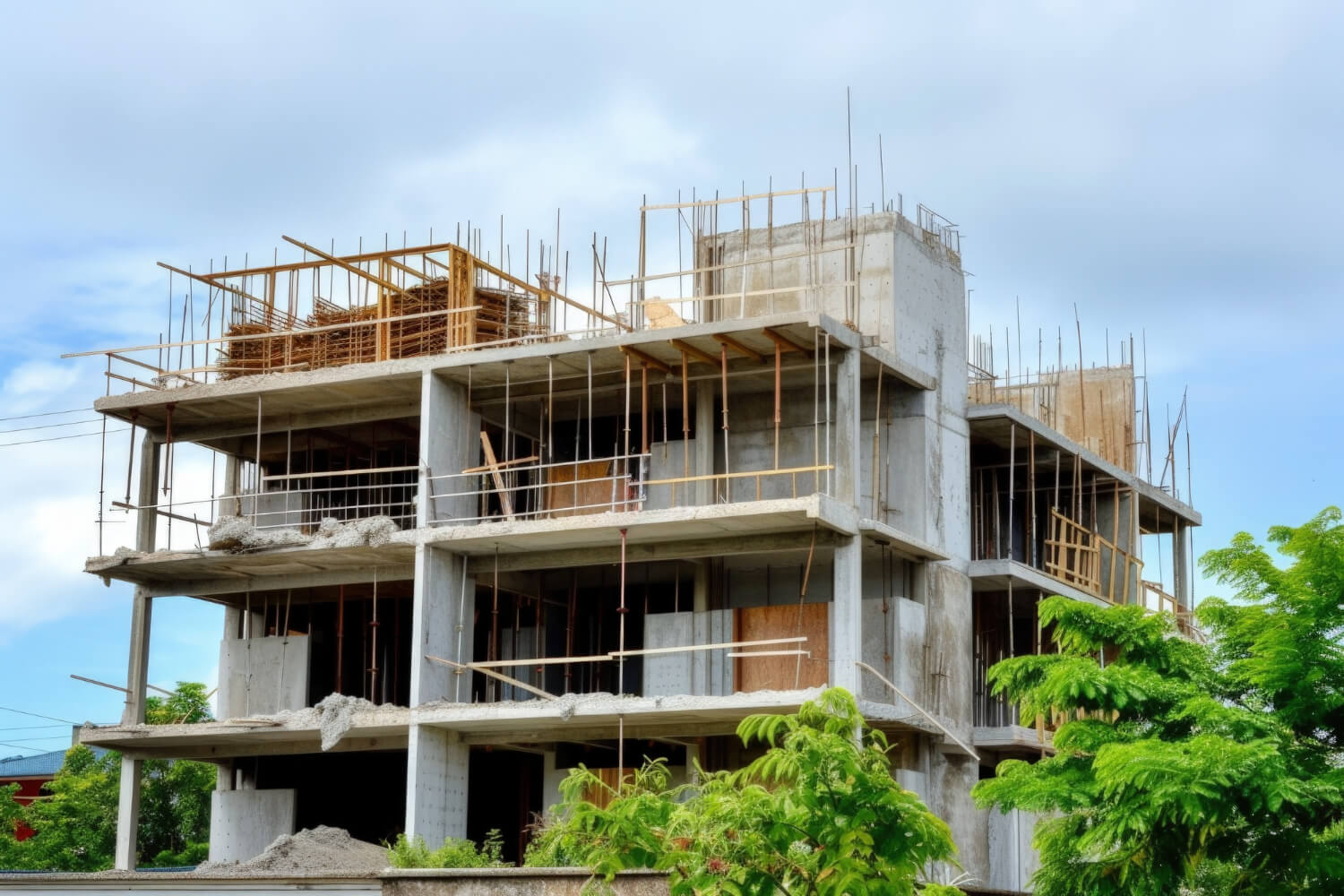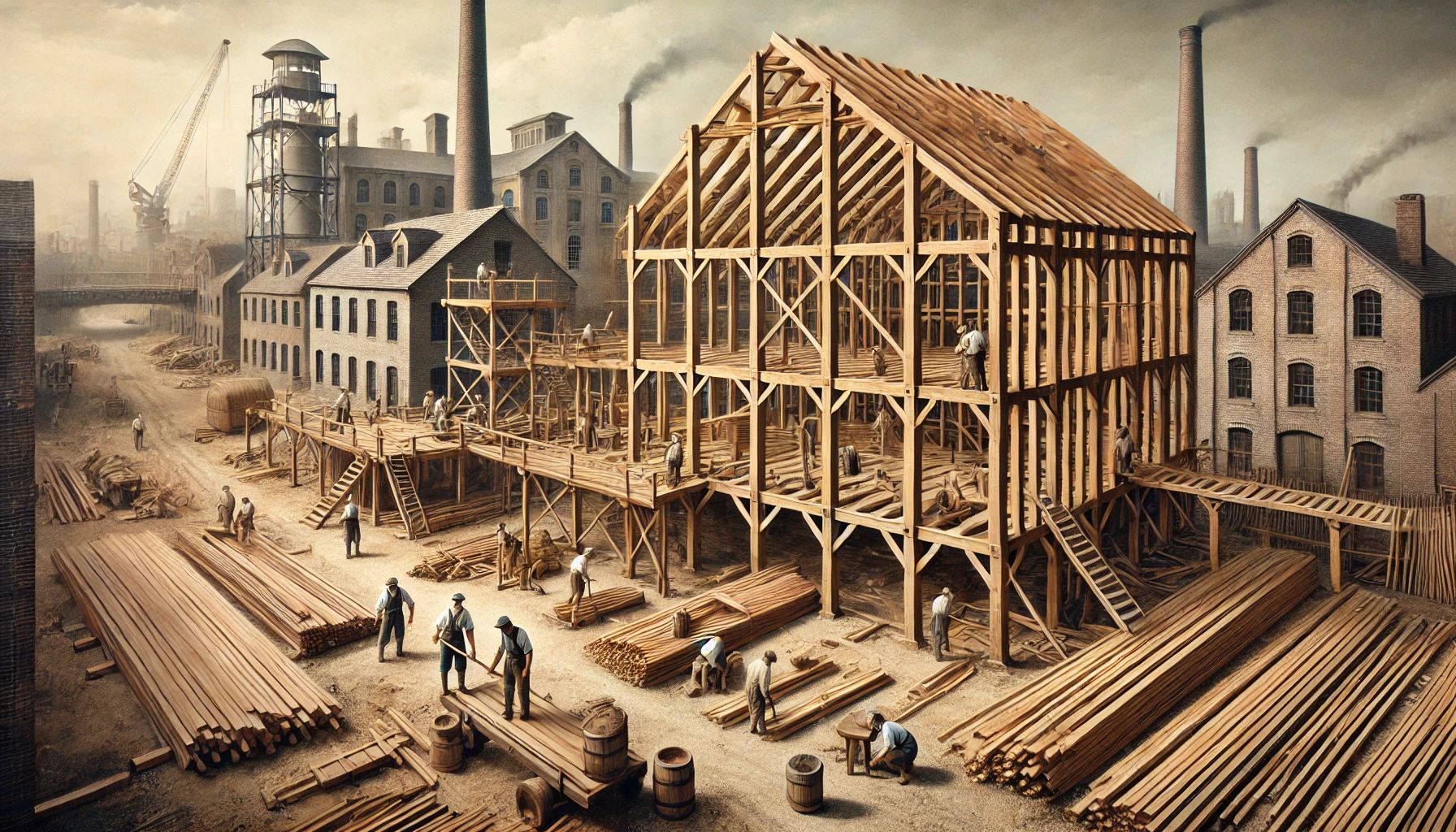The construction industry faces an unprecedented convergence of challenges in 2025. With 439,000 additional workers needed nationwide [1], energy codes demanding up to 90% fossil fuel reduction [2], and project timelines under constant pressure, traditional building methods that require multiple trades, materials, and systems create cascading complexity. While the industry struggles with fragmented approaches—coordinating framers, insulators, waterproofers, air-sealing specialists, and finishing trades—ICF construction using polyurethane technology delivers a fundamentally different solution: true system integration through the revolutionary 7-in-1 building system.
Quick Answer: ICF construction using polyurethane technology integrates seven building functions—structure, insulation, vapor barrier, air barrier, sound barrier, fire barrier, and finish-ready surfaces—into one streamlined installation, reducing labor requirements by up to 50% while delivering R-38 performance, 4+ hour fire resistance, and 250+ mph wind protection.
Key Takeaways
- Labor Solution: Addresses the 439,000 worker shortage by consolidating 8-12 separate trades into 2-4 essential functions through system integration
- Market Momentum: ICF market grows 5.8% annually, reaching $1.33 billion by 2030, with polyurethane leading at 6.1% CAGR [3]
- Code Compliance: R-38 continuous insulation exceeds California’s 2025 Energy Code requirements and federal building standards demanding 30% energy improvement [4]
- Economic Integration: Total project analysis shows competitive ROI through reduced coordination costs, accelerated schedules, and lifecycle performance
- Performance Leadership: 1.8× stronger than EPS ICF with almost zero water absorption, Class 1/A fire rating, and STC 55+ acoustic performance
- Future-Proof Technology: Integrated approach positions projects ahead of evolving building codes and increasing climate challenges
Understanding System Integration vs. Traditional Assembly
Modern ICF construction has evolved into a sophisticated solution that addresses these coordination challenges through system integration. Rather than assembling separate components, insulated concrete forms provide a unified building envelope that addresses multiple performance requirements simultaneously.
The Traditional Assembly Challenge
Conventional building approaches treat each performance requirement as an independent system requiring distinct solutions:
Wood Frame Assembly Complexity:
- Structural framing requires framers and carpenters
- Insulation installation needs insulation specialists
- Vapor barriers require waterproofing contractors
- Air sealing demands specialized technicians
- Fire protection needs additional treatments and materials
- Acoustic control requires separate sound-dampening systems
- Finish preparation involves furring strips and additional fastening systems
Coordination Multiplication: With 8-12 separate trades involved, project management becomes exponentially complex. Weather delays affect multiple sequential operations, quality control spans numerous contractors, and warranty issues involve coordinating across multiple suppliers and installation teams.
CMU Block System Limitations: Concrete masonry construction provides structural strength but requires separate systems for thermal performance:
- Exterior insulation systems add complexity and cost
- Vapor control needs additional membranes
- Thermal bridging requires expensive thermal breaks
- Fire resistance comes from mass rather than engineered protection
- Acoustic performance depends on wall thickness and additional treatments
Steel Frame Assembly Issues: Steel construction offers structural capacity while creating new coordination challenges:
- Extreme thermal bridging requires comprehensive thermal break solutions
- Insulation systems must work around steel structural members
- Vapor control becomes critical due to condensation potential
- Fire protection requires spray-applied or board systems
- Acoustic performance needs additional damping materials
The 7-in-1 Integration Principle
Polyurethane ICF fundamentally changes this equation by integrating seven essential building functions into one coordinated system. Rather than assembling separate components, builders install a unified building envelope that addresses multiple performance requirements simultaneously.
Function 1: Structural System
Monolithic Concrete Performance: The concrete core provides exceptional structural strength through monolithic construction principles. Unlike assembled systems that fail at connection points, the continuous concrete structure distributes loads evenly across the entire wall system.
Wind Resistance Engineering: Testing demonstrates resistance exceeding 250 mph—well beyond the destruction threshold of conventional construction. The monolithic concrete core combined with polyurethane forms creates a unified structural element that transfers wind forces without stress concentrations at individual connections.
Seismic Response Characteristics: The concrete-polyurethane combination behaves with optimal flexibility—rigid enough to carry loads, flexible enough to absorb earthquake energy without cracking. This unified response prevents the cascading failures that affect assembled systems during seismic events.
Foundation Integration: Below-grade and above-grade walls form one continuous structural system, eliminating the vulnerable transition zone where most building failures occur during extreme events.
Function 2: Insulation System
Continuous Thermal Performance: R-38 continuous insulation eliminates thermal bridging completely. Where steel studs create thermal highways and wood framing leaks energy at every structural member, polyurethane ICF walls maintain consistent thermal resistance across the entire building envelope.
Thermal Mass Integration: The concrete core absorbs heat during the day and releases it at night, naturally moderating temperature swings. Combined with polyurethane’s insulation barrier, this creates passive climate control that reduces HVAC cycling and energy consumption.
Performance Longevity: Unlike fiberglass that settles or foam that shrinks over time, the closed-cell structure maintains R-38 performance permanently. Twenty-year-old polyurethane ICF walls test identically to new installations, ensuring consistent energy efficiency throughout the building’s lifespan.
Function 3: Vapor Barrier System
Moisture Control Engineering: Almost zero water absorption prevents the performance degradation that affects other building systems. The closed-cell structure blocks moisture migration at the molecular level, eliminating conditions necessary for mold growth and structural moisture damage.
Simplified Moisture Management: Traditional construction requires separate house wraps, vapor barriers, and careful detailing around penetrations. The polyurethane ICF system provides comprehensive moisture control through material properties rather than assembly techniques.
Flood Resistance Capability: The nearly impermeable characteristics provide exceptional protection during flooding events. While conventional construction suffers extensive water damage requiring costly remediation, polyurethane ICF walls shed water and maintain structural integrity.
Function 4: Air Barrier System
Airtightness Performance: Achieves less than 1 ACH50 performance through interlocking design and monolithic construction. This exceeds Passive House standards while eliminating the energy waste common in conventional construction.
Simplified Air Sealing: Traditional buildings require extensive air sealing efforts around windows, doors, penetrations, and assembly joints. The integrated ICF approach provides comprehensive air sealing through system design rather than additional installation steps.
Energy Code Compliance: Modern energy codes increasingly require specific airtightness performance. The integrated air barrier system ensures code compliance without additional measures or specialized installation techniques.
Function 5: Sound Barrier System
Acoustic Engineering: STC 55+ rating combines concrete mass with polyurethane damping properties. This acoustic performance significantly exceeds conventional construction and addresses both impact and airborne sound transmission.
Frequency Response Characteristics: The combination of dense concrete and polymeric damping material provides effective sound control across multiple frequency ranges. Low-frequency sounds are controlled by mass while higher frequencies are absorbed by the polyurethane structure.
Commercial Application Benefits: Enhanced acoustic performance enables higher-density development and improved occupant comfort in commercial applications where sound control directly affects productivity and market value.
Function 6: Fire Barrier System
Fire Engineering Performance: Class 1/A rated system provides 4+ hour fire resistance while maintaining structural integrity. When exposed to flame, polyurethane forms a protective char layer—the same principle used in spacecraft heat shields.
Structural Fire Response: Unlike steel that loses 50% of its strength at 1,000°F, concrete maintains structural integrity beyond 2,000°F while polyurethane char provides thermal protection. This combination keeps buildings standing during extended fire exposure.
Life Safety Engineering: The extended fire rating provides evacuation time and firefighting access that other systems cannot match. In high-rise applications, this protection can mean the difference between contained damage and total loss.
Function 7: Finish-Ready System
Integrated Attachment Points: Embedded attachment points every 8 inches enable direct installation of interior drywall and exterior cladding without furring strips or specialized fasteners. This eliminates additional structural elements while providing secure attachment for all finish materials.
Universal Compatibility: The attachment system works with conventional interior finishes, exterior cladding systems, and specialty architectural treatments. Contractors can use standard installation techniques without learning new fastening methods or purchasing specialized tools.
Quality Control Benefits: Integrated attachment points ensure consistent spacing and alignment, reducing finish installation time and improving final appearance quality.
ICF Construction: Economic Analysis and Total System Value
Understanding the economic impact of 7-in-1 integration requires analyzing total project costs rather than comparing individual material prices. The system consolidation creates measurable returns through reduced complexity, accelerated schedules, and improved performance.
Labor Efficiency Analysis
Trade Consolidation Benefits: Traditional construction requires coordination between framers, insulators, waterproofers, air-sealing specialists, fire protection contractors, acoustic specialists, and finish trades. The 7-in-1 system reduces this to concrete placement and finish trades.
Quantified Labor Savings:
- 40-60% reduction in trade coordination time
- 30-50% faster project completion through simplified installation
- 25-40% fewer weather delays due to all-weather construction capability
- 50-75% reduction in callback issues through integrated quality control
Skills Accessibility: Polyurethane ICF installation requires less specialized skill than coordinating multiple traditional systems. Basic training enables productive installation, addressing the skilled labor shortage affecting 88% of construction firms [5].
Schedule Acceleration Impact
Timeline Comparison:
- Traditional methods: 8-16 weeks to weather-tight enclosure
- Polyurethane ICF: 4-8 weeks to weather-tight enclosure
- 50-100% faster occupancy enables earlier revenue generation
Carrying Cost Reduction: For a typical $500,000 project:
- Construction financing: $2,000-5,000 monthly savings
- Insurance and security: $500-1,200 monthly savings
- Project management overhead: $3,000-6,000 monthly savings
- Combined monthly savings: $5,500-12,200
Material Cost Integration
System Cost Comparison:
| Function | Traditional Assembly | Polyurethane ICF |
| Function | Traditional Assembly | Polyurethane ICF |
| Structure | $15-22/SF | Integrated |
| Insulation | $8-12/SF | Integrated |
| Vapor Barrier | $2-4/SF | Integrated |
| Air Sealing | $3-6/SF | Integrated |
| Fire Protection | $5-8/SF | Integrated |
| Sound Control | $4-8/SF | Integrated |
| Attachment System | $2-3/SF | Integrated |
| Labor Coordination | $8-15/SF | $3-6/SF |
| Total Investment | $47-78/SF | $48-72/SF |
Note: Values are estimates and may vary by project and location.
Lifecycle Value Creation
Energy Performance Integration:
- 50-75% HVAC load reduction through R-38 continuous insulation
- $2,000-5,000 annual residential energy savings
- $10,000-25,000 annual commercial energy savings
- 25-year residential value: $50,000-125,000
Maintenance Advantages:
- Almost zero water absorption prevents moisture-related issues
- No insulation settling or performance degradation over time
- Pest resistance eliminates ongoing treatment costs
- Enhanced structural durability reduces repair frequency
Installation and Construction Advantages
The 7-in-1 system design prioritizes installation efficiency and quality control, addressing key concerns that complicate traditional construction coordination.
Streamlined Construction Process
Weather Independence: Installation proceeds in conditions that halt wood framing or masonry work. This all-weather capability reduces the weather-related delays that cost projects time and money, particularly important during tight construction schedules.
Quality Integration: Fewer installation variables reduce opportunities for errors while creating accountability through unified system performance. Instead of troubleshooting issues across multiple contractors, quality control focuses on concrete placement and finish installation.
Simplified Logistics: Rather than coordinating deliveries and staging for multiple material systems, projects require coordinated delivery of ICF blocks and concrete placement. This simplification reduces site congestion and material handling costs.
Technical Performance Standards
Installation Tolerances: The interlocking design accommodates normal construction tolerances while maintaining performance standards. Unlike assembled systems where small errors compound across multiple components, the integrated approach provides consistent results.
Concrete Placement Excellence: The 1.8× strength advantage of polyurethane forms reduces concrete blowouts and form damage during placement. This enhanced durability ensures successful concrete pours while reducing waste and rework.
Inspection Simplification: Building officials inspect one integrated system rather than multiple separate components. This streamlined inspection process reduces scheduling complexity and ensures consistent code compliance verification.
Competitive Positioning and Market Evolution
The construction industry’s transformation toward integrated building systems reflects broader economic and regulatory pressures that favor comprehensive solutions over fragmented approaches.
Industry Growth Drivers
Regulatory Evolution: Building energy codes continue evolving toward net-zero energy requirements. California’s 2025 Energy Code requires significant fossil fuel reduction that traditional construction methods struggle to achieve cost-effectively [6].
Labor Market Reality: With 41% of construction workers expected to retire by 2031 [7], construction methods that simplify installation and reduce specialized trade requirements provide crucial competitive advantages.
Climate Resilience Demands: Increasing extreme weather events drive demand for disaster-resistant construction. The integrated 7-in-1 system’s wind, fire, and flood resistance aligns with emerging resilience requirements across multiple jurisdictions.
Market Differentiation Strategy
Performance Leadership: Polyurethane ICF construction delivers measurably improved performance across thermal, structural, durability, and safety metrics compared to conventional concrete walls and traditional building methods. This performance advantage supports premium positioning while delivering competitive value through system integration.
Professional Recognition: Architects and engineers increasingly specify advanced insulated concrete forms for projects requiring improved performance. This professional endorsement drives market acceptance and positions integrated ICF construction approaches as best practice rather than alternative technology.
Supply Chain Maturity: Established manufacturers with proven track records provide reliable supply chains and technical support, reducing adoption risks that previously limited market penetration.
Technical Applications and Design Integration
The 7-in-1 system accommodates diverse architectural requirements while maintaining performance advantages across multiple building types and applications.
Residential ICF Construction Applications
Energy Efficiency Leadership: Residential ICF construction projects achieve 30-50% energy reductions compared to conventional construction. Modern concrete homes using polyurethane ICF walls provide continuous insulation and integrated air sealing that eliminate energy losses plaguing traditional building methods.
Comfort Enhancement: Consistent interior temperatures and enhanced acoustic performance create superior living environments. The thermal mass effect moderates temperature swings while sound control improves privacy and reduces noise infiltration.
Insurance and Resale Benefits: Enhanced fire and wind resistance often qualify for insurance premium reductions of 10-25%. High-performance buildings command 2-5% resale premiums while providing faster sale times in energy-conscious market segments.
Commercial Applications
Tenant Attraction Features: Superior acoustic performance and consistent environmental control appeal to commercial tenants. Energy efficiency reduces operating costs while enhanced comfort improves productivity and employee satisfaction.
Building Performance Standards: LEED and other green building certifications become easier to achieve through integrated performance rather than assembled systems requiring extensive coordination and verification.
Operational Efficiency: Reduced maintenance requirements and consistent performance characteristics lower lifecycle operating costs while improving building reliability for commercial operators.
Industrial and Specialized Applications
Process Environment Control: Applications requiring precise environmental control benefit from consistent thermal and moisture performance. The integrated vapor barrier eliminates moisture infiltration that affects sensitive processes or equipment.
Safety and Security Requirements: Enhanced fire resistance and structural strength support applications requiring improved safety performance. The monolithic construction provides security benefits while maintaining aesthetic flexibility.
Future-Proofing and Technological Evolution
The integrated building system approach positions projects ahead of evolving regulatory requirements and technological developments affecting the construction industry.
Code Evolution Preparation
Energy Performance Trajectory: Current R-38 performance exceeds most energy code requirements and provides headroom for future code tightening. Projects built today remain compliant as energy standards continue evolving toward net-zero requirements.
Resilience Requirements: Increasing extreme weather frequency drives building code evolution toward mandatory resilience features. The integrated system’s disaster resistance provides protection against future regulatory requirements.
Indoor Air Quality Standards: Enhanced moisture control and air sealing support emerging indoor air quality requirements. The integrated approach prevents moisture-related issues that affect other building systems.
Technology Integration Capability
Smart Building Compatibility: The integrated structure accommodates modern building automation systems without compromising thermal or structural performance. Consistent environmental control supports advanced HVAC and energy management technologies.
Renewable Energy Integration: Superior thermal performance reduces energy loads, enabling smaller renewable energy systems to achieve net-zero performance. The structural strength supports rooftop solar installations and other distributed energy technologies.
Future Technology Adaptation: The integrated approach provides a stable platform for emerging technologies while maintaining performance advantages independent of technological changes.
Frequently Asked Questions
How does the 7-in-1 system compare to traditional ICF construction? Traditional EPS ICF provides improved insulation over wood framing but still requires separate systems for optimal moisture control, fire protection, and acoustic performance. Polyurethane ICF integrates these functions through material properties rather than assembly techniques. The 1.8× strength advantage and almost zero water absorption provide measurable improvements over traditional ICF approaches.
What trades are needed for polyurethane ICF installation? The integrated system reduces trade requirements to concrete placement crews and finish trades. Experienced concrete contractors can learn ICF installation quickly since the main difference is stacking forms before the pour instead of setting removable panels. Most contractors report the learning curve is easier than expected.
How does the integrated approach affect construction scheduling? Project timelines typically reduce by 30-50% through simplified coordination and all-weather construction capability. Instead of scheduling multiple sequential trades, projects focus on concrete placement and finish installation. Weather delays that stop conventional construction don’t affect ICF installation, maintaining schedule momentum.
Does the 7-in-1 system work for complex architectural designs? The system accommodates virtually any architectural style through flexible forming and universal finish compatibility. Curved walls, varied floor plans, and complex geometries are achievable using standard ICF techniques. The embedded attachment points support all conventional finish materials without restricting design creativity.
How do building officials inspect integrated systems? Most jurisdictions have standard inspection procedures for ICF construction since the technology is established and code-compliant. Inspectors examine form installation, reinforcement placement, and concrete quality using conventional methods. The integrated approach often simplifies inspection since officials evaluate one system rather than multiple components.
What about electrical and plumbing integration? Electrical runs route through the plastic ties or in channels cut into the foam before concrete placement. For major plumbing runs, many contractors prefer interior partition walls rather than exterior ICF walls. Planning utility runs during design is more important with ICF than traditional framing, but standard installation techniques apply.
How does the economic analysis work for different project sizes? Larger projects typically show greater economic advantages through economy of scale in material procurement and labor efficiency. Smaller residential projects benefit more from schedule acceleration and reduced weather delays. Commercial projects often see the greatest returns through reduced operating costs and enhanced performance capabilities.
What maintenance is required for integrated ICF systems? Long-term maintenance focuses on conventional building elements since the ICF walls themselves require minimal attention. The concrete and polyurethane don’t rot, warp, or attract pests like wood framing systems. Main maintenance considerations involve proper drainage around the building and normal finish material upkeep.
Conclusion: The Integration Advantage
The construction industry’s evolution toward integrated building systems represents more than technological advancement—it reflects the economic reality that fragmented approaches cannot efficiently address modern building performance requirements. The 7-in-1 polyurethane ICF system demonstrates how true integration creates value through simplified construction, enhanced performance, and competitive lifecycle economics.
Rather than assembling separate systems for structure, insulation, vapor control, air sealing, fire protection, acoustic performance, and finish attachment, the integrated approach delivers all seven functions through coordinated installation. This fundamental shift addresses labor shortages, accelerates construction schedules, and provides superior building performance while reducing total project costs.
The economic advantages extend beyond construction savings. Enhanced energy efficiency, reduced maintenance requirements, insurance premium reductions, and improved occupant comfort create lasting value that traditional assembly methods cannot match. As energy codes tighten and extreme weather becomes more frequent, buildings constructed with integrated systems provide future-proof performance and regulatory compliance.
The 7-in-1 building system represents the evolved standard in construction—delivering the performance, efficiency, and resilience that modern projects demand while addressing the practical challenges that constrain traditional building methods.
Ready to simplify your next project while improving performance? Talk to an ICF professional for more details about how the 7-in-1 polyurethane ICF system can reduce labor requirements, accelerate construction schedules, and deliver superior building performance through proven system integration technology.
Sources
[1] Associated Builders and Contractors (ABC), “Construction Industry Must Attract 439,000 Workers in 2025,” January 2025
[2] California Energy Commission, “Energy Commission Adopts Updated Building Standards Expanding Requirements for Heat Pumps,” September 2024
[3] Grand View Research, “Insulated Concrete Form Market Size | Industry Report, 2030,” 2024
[4] U.S. Department of Energy, “Federal Building Energy Efficiency Rules and Requirements,” Federal Energy Management Program, 2025
[5] Associated General Contractors of America, “AGC Workforce Survey,” 2024
[6] California Energy Commission, “2025 Building Energy Efficiency Standards,” 2024
[7] National Center for Construction Education and Research, “Construction Workforce Outlook,” 2024
[8] Monolith ICF Technical Specifications, “MonolithTM Insulated Concrete Forms Product Data,” 2025
[9] ICF Builder Magazine, “Market Growth Analysis,” 2024
[10] Construction Dive, “Labor shortage continues despite economic pressures,” 2024




